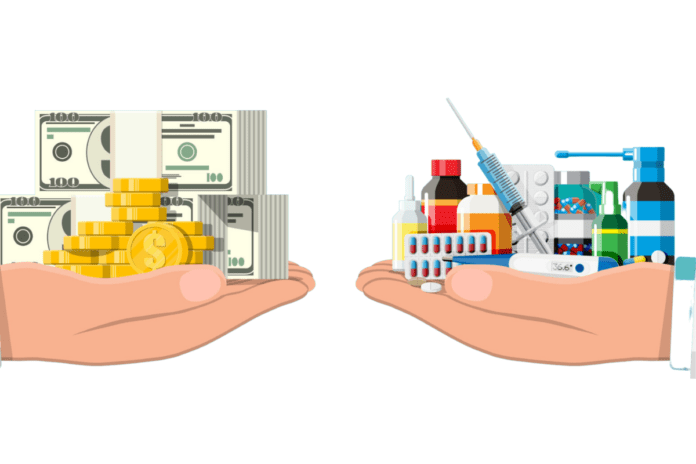We have been hearing about payback on medical devices for years now, but nothing concrete has been implemented. With the new government it seems that we are increasingly moving towards canceling the law, but let’s try to clarify.
Payback background
In 2011, a cap was introduced on public spending on medical devices, which increasingly fell over the following three years, regardless of the levels of care to be ensured.
With the 2015 financial measure it is then established that in the event of a region exceeding the ceiling, a portion of the excess expenditure will have to be reimbursed by the supplier companies, according to the percentage impact of their turnover on regional expenditure.
This law worries supplier companies, unable to meet the costs due to economic unsustainability, but in any case the measure will not be applied for several years.
The proposal was subsequently resumed in 2022, when the Aid Decree bis was published, which imposed an ultimatum: the Ministry of Health must adopt a decree by 30 September certifying that the spending ceiling for medical devices in the period from 2015 to 2018 and companies must make payments within 30 days of the issuing of the regional measures.
The companies’ response
At this point hundreds of appeals are filed with the TAR to contest the illegitimacy of the measures.
First of all, FIFO healthcare draws attention to the fact that supplier companies participate in public tenders, in which it is the contracting authority that establishes whether the offers received are adequate and chooses among them the one that best satisfies it. Furthermore, once a company has been awarded a tender, it is required by law not to interrupt its service.
In this context, FIFO sees payback as a way of not paying, and having it reimbursed, part of the costs previously agreed upon in a public tender in which the public administration itself sets the parameters.
Within the protests for illegitimacy, the retroactivity of the maneuver is also highlighted and the fact that, during the tender, companies have no way of knowing whether the regional ceilings are exceeded or not.
The consequences of the maneuver
Introducing the payback therefore appears to be only a risk for the healthcare sector: fewer companies would participate in tenders, finding themselves forced to raise the prices of their products to stay afloat and leaving healthcare facilities without supplies of essential medical devices.
A vicious circle is created in which regions are forced to spend more to deal with the lack of equipment, with a consequent collapse of the healthcare system and an increase in the gap between public and private healthcare.
Another big problem that should not be underestimated is the closure of businesses due to bankruptcy and the thousands of jobs at risk.
To support this, data is available from the study conducted by Nomisma, commissioned by SME healthcare and FIFO healthcare confcommercio, entitled “The impact of payback on companies in the medical device supply chain“.
The study involved 4,000 companies active in Italy and the results are dramatic: 1,400 companies find themselves in a situation of imbalance and 190,000 jobs are at risk.
With this mechanism, companies are asked to pay a fee that would be added to the taxes already paid during the years affected by the tax relief request. This means that small and medium-sized businesses would find themselves paying a percentage equal to approximately 60% of the profits produced in the last financial year.
As if this were not enough, this would lead to the exclusion of companies from public administration tenders, as they are required to satisfy a solidity criterion that does not coincide with the loss of business.
In addition to employment risks, the Nomisma study also indicates that the supply network would become thinner, reducing the choices available to contracting authorities, with possible negative repercussions also on purchase prices.
Where are we at?
In March 2023, the government announced that a fund of 1 billion euros had been established to limit the burden on businesses. However, the obligation to pay a reduced fee remains for companies that have never initiated or decide to renounce litigation, with an exemption until June 30th.
This is a first sign indicating that the government is trying to find resources to remedy what is nothing more than a budget hole, but this is not enough: the trade associations Confindustria medical devices and FIFO healthcare are calling for the elimination of the law .
Massimiliano Boggetto, president of Confindustria medical devices, states in a complaint to the European Commission: “We reiterate that the idea of resolving the issue with a discount, while still leaving the mechanism in force, is not a viable option for our companies. We have filed a complaint with the European Commission to evaluate the opening of an infringement procedure against Italy because the payback violates community rules on competition and market access.”
Massimo Riem, FIFO president, also underlines the danger of payback: “In 2019 the NHS purchased medical devices for a value equal to approximately 5.4% of the budget; our per capita health spending is among the lowest in Europe, yet they want to introduce an even lower spending ceiling, equal to 4.4%. Never before have we seen the damage that cuts to healthcare can cause in recent years: this is why the payback should worry us all.”
New indications should be issued shortly, but at least for now we are heartened to know that there is strong attention to the topic by political forces.
To delve deeper into the topic and get to the heart of the discussions, the webinar “MEDICAL DEVICES – challenges and solutions in light of the new regulatory deadlines” will be held on Tuesday 11 July at 2.00 pm, register here!


